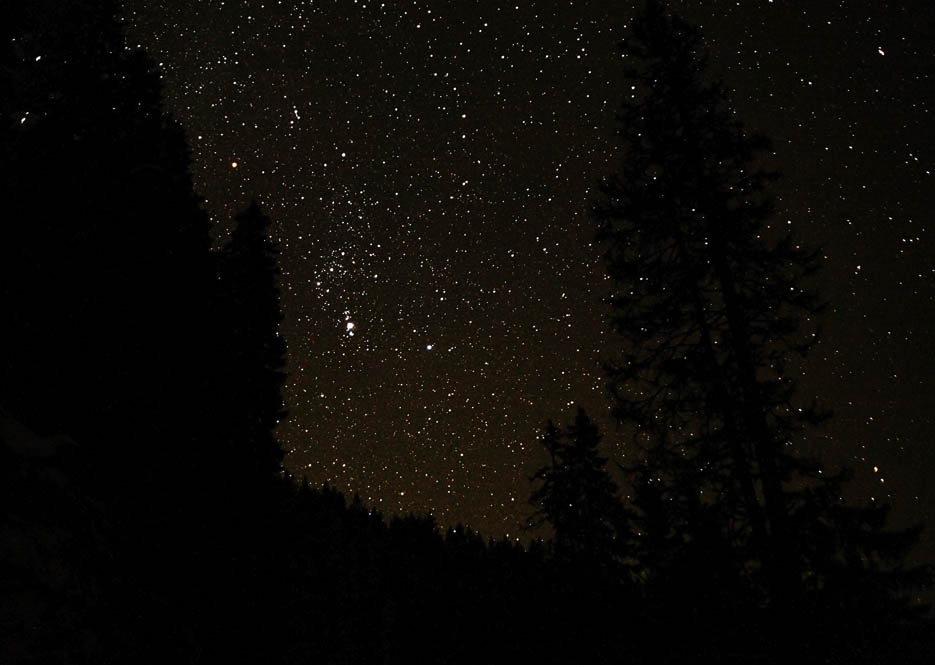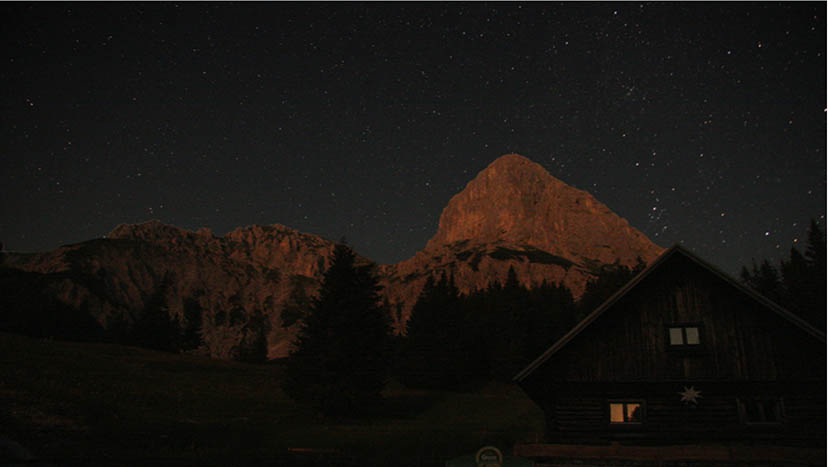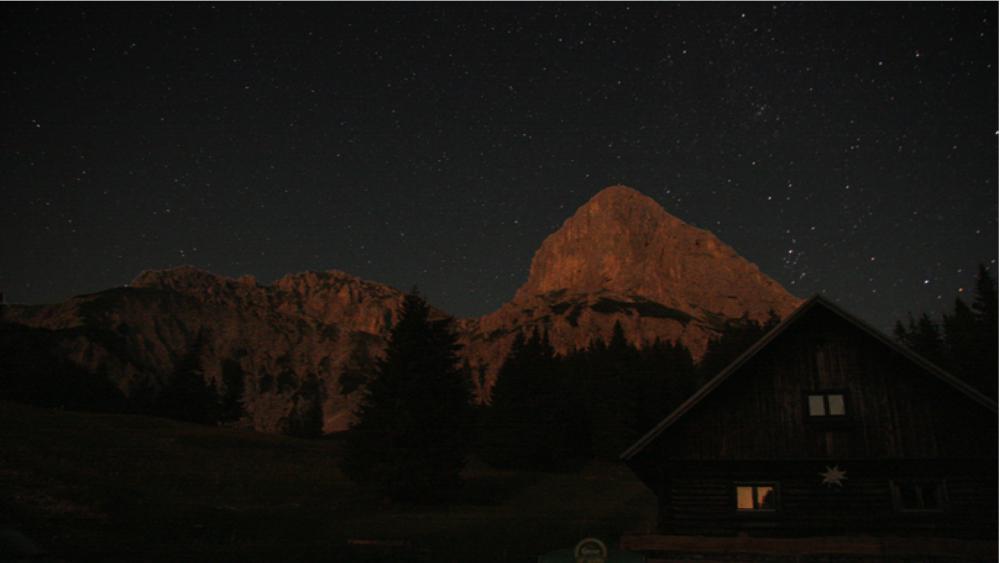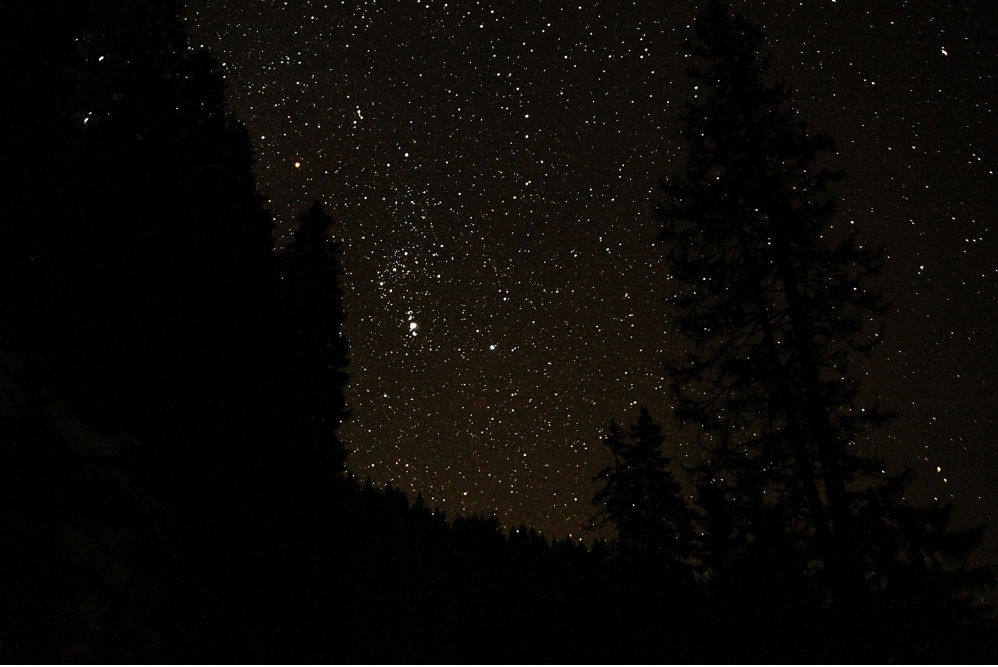
Category of Astronomical Heritage: dark skies
Eastern Alpine and Großmugl starlight areas (multiple locations): General description

Presentation
Geographical position
Two different locations
- General description for all locations
- East Alpine Starlight Reserve numerous communities, provinces of Lower Austria, Upper Austria, Styria and Carinthia, Austria.
- Großmugl Starlight Oasis community of Großmugl, province of Lower Austria, Austria.
Location
- East Alpine Starlight Reserve: Latitude 46° 52′ to 47° 58′ N, longitude 13° 35′ to 14° 55′ E. Elevation generally between c. 1000m and 1500m above mean sea level.
- Großmugl Starlight Oasis (core zone): Latitude 48° 29′ 20″ N, longitude 16° 13′ 20″ E. Elevation 250m above mean sea level.
General description
Within the Eastern Alps WSW of Vienna is an elliptical area, about 200 × 100km in size, where the high surrounding mountains provide sufficient shielding from light pollution that the dark night skies are of near perfect natural quality. A separate, much smaller area to the north of Vienna provides a dark-sky ‘oasis’ that is easily accessible to millions of city dwellers.

Fig. 1. The constellation Orion is almost overwhelmed by the light from the countless stars in the pristine skies above the Gesäuse National Park in the East Alpine Starlight Reserve. Photograph © M. Reithofer
Brief inventory

Fig. 2. The view north-eastwards at midnight towards the south-western end of the Gesäuse National Park in the East Alpine Starlight Reserve. The setting moon illuminates the Admonter Kalbling, 2196m, in the background. Photograph © Thomas Posch
The East Alpine Starlight Reserve is an area of about 20,000 km², located about 150km to the west of Vienna where the Alps reach a height of 3000m. At the heart of this area, the dark night sky is of an exceptional quality. This is because low lighting in the surrounding communities together with the mountain topography provide an 80km-wide shield against central European light-pollution and city-light ‘domes’. The high elevation also reduces light scattering and extinction of starlight.
The Großmugl Starlight Oasis is a small area of 1.3 km² within the lower hills at the very eastern end of the Alps, about 30km north of Vienna. While the skies here are not pristine they are dark enough to provide a clear view of the Milky Way and thousands of individual stars (with a dependable visual limiting magnitude of 6). This is because the hills cover the sky-glow from nearby Vienna. Within the Oasis, a viewing spot near the largest bronze-age tumulus in central Europe offers a 360° unobstructed horizon, 250m above sea level. Taken together with the nature reserve Leiser Berge, the Starlight Oasis covers 300 km².
Cultural and symbolic dimension
It is extraordinary that an area with a near-natural dark night sky should exist within the heart of Europe, a continent that is so brightly lit. Furthermore, the proximity of the East Alpine Starlight Reserve to population centres, including the cities of Vienna, Salzburg, Linz and Graz, as well as to a major north-south route across the continent, provides millions of people with easy access to an area where they can view a near pristine dark night sky. This is an almost unique natural resource.
The Großmugl Starlight Oasis provides a smaller but still exceptional dark-sky resource that is even closer to the City of Vienna—it is only 33km from St Stephen’s Cathedral in the city centre—and hence within easy reach of 70% of the Austrian population.
Management and use
Present use
The night skies in the East Alpine Starlight Reserve area are already well embedded in National Park programs including night hiking and observation of nocturnal species, many of them endemic and reliant oupn the natural nighttime environment. The area also includes the world’s largest monastic library, at Admont, and the Eisenerz Iron Road world heritage initiative.
The Großmugl Starlight Oasis is used by local schools and universities in their courses, as well as for recreational and amateur astronomy. The Starlight Oasis provides optimal conditions for viewing the dark night sky, with moderate temperatures and sufficient oxygen (being at a low enough elevation) that visual perception is not impaired.
Protection
The bronze-age tumulus in Großmugl is protected by federal law as a historic monument. It is surrounded by a circular no-building zone, 0.65km in radius, regulated by the community. A 10km buffer zone has been proposed, which would include an existing nature protection area, the Leiser Berge.
The Starlight Oasis is fully supported by the community of 300 households in Großmugl itself, where there are fewer than 100 streetlights. By-laws to protect the night sky have been passed by the city council, making reference to the Starlight Reserve.
Context and environment
The naked-eye sky quality in the East Alpine Starlight Reserve area is indistinguishable from the best sites in the world. Measurements at elevations of 800m to 1800m give a sky brightness of 21.6 (for the Milky Way) to 21.8 mag/arcsec² (for the Galactic pole). Light-levels of near 1mlx are indistinguishable from the world’s best astronomical sites. With the mountains shielding most of the natural airglow, valley light levels drop below 100 ╬╝lx, producing pure starlight. Atmospheric inversion frequently provides viewing conditions above cloud-covered valleys that are similar to these obtained in western-continental deserts and trade-wind volcanic islands.
Management, interpretation and outreach
The East Alpine Starlight Reserve area contains the Kalkalpen and Gesäuse National Parks (both IUCN category II), the Dürrenstein wilderness area (IUCN Ib) and more than 10 nature reserves. The Conservation areas and National Parks are managed by the respective administrative bodies.
The bronze-age tumulus area is protected by the federal agency for historic monuments (Bundesdenkmalamt) and managed by the town and community of Großmugl.
No multimedia content published
Currently there is no multimedia content published for this case study







